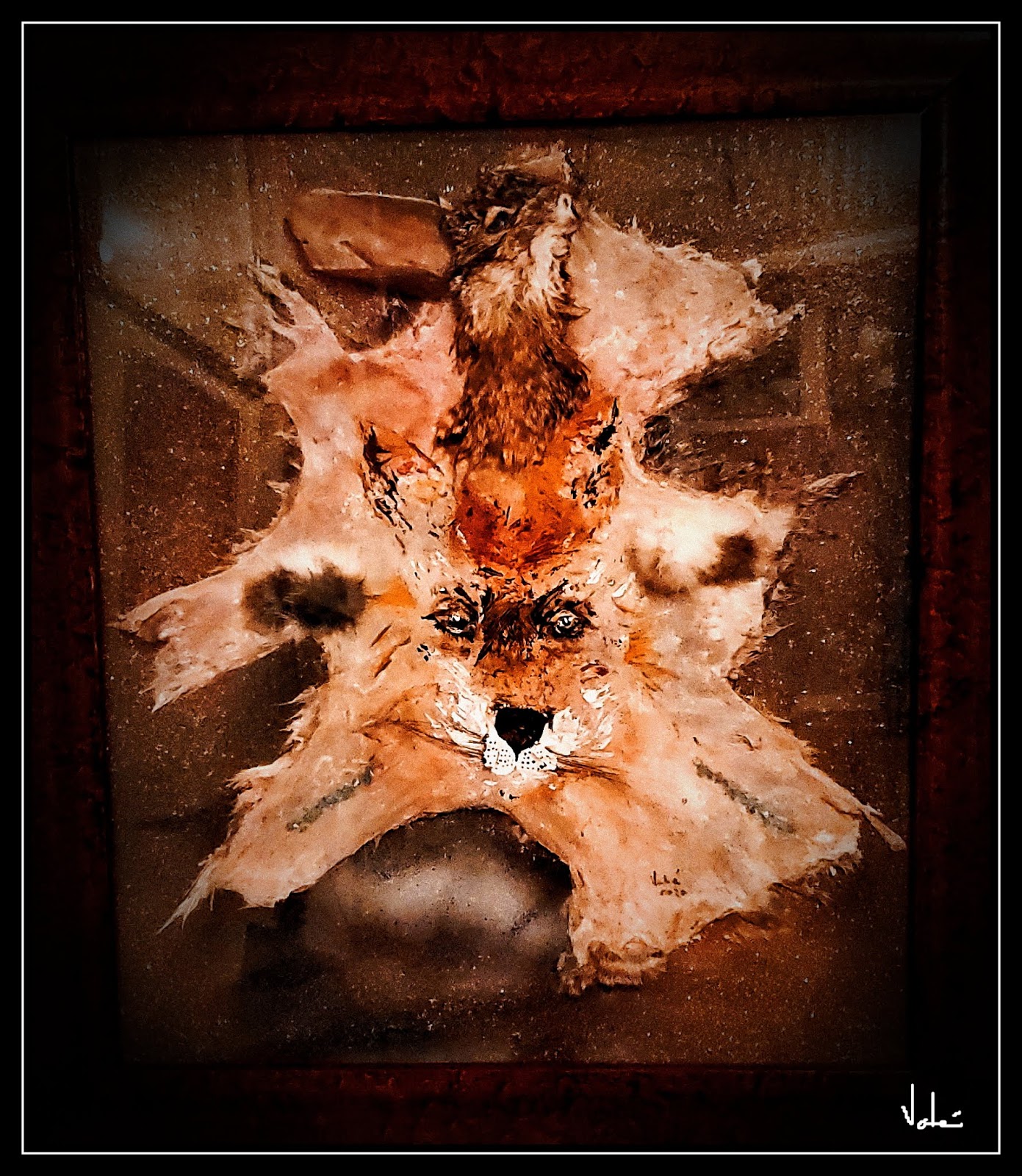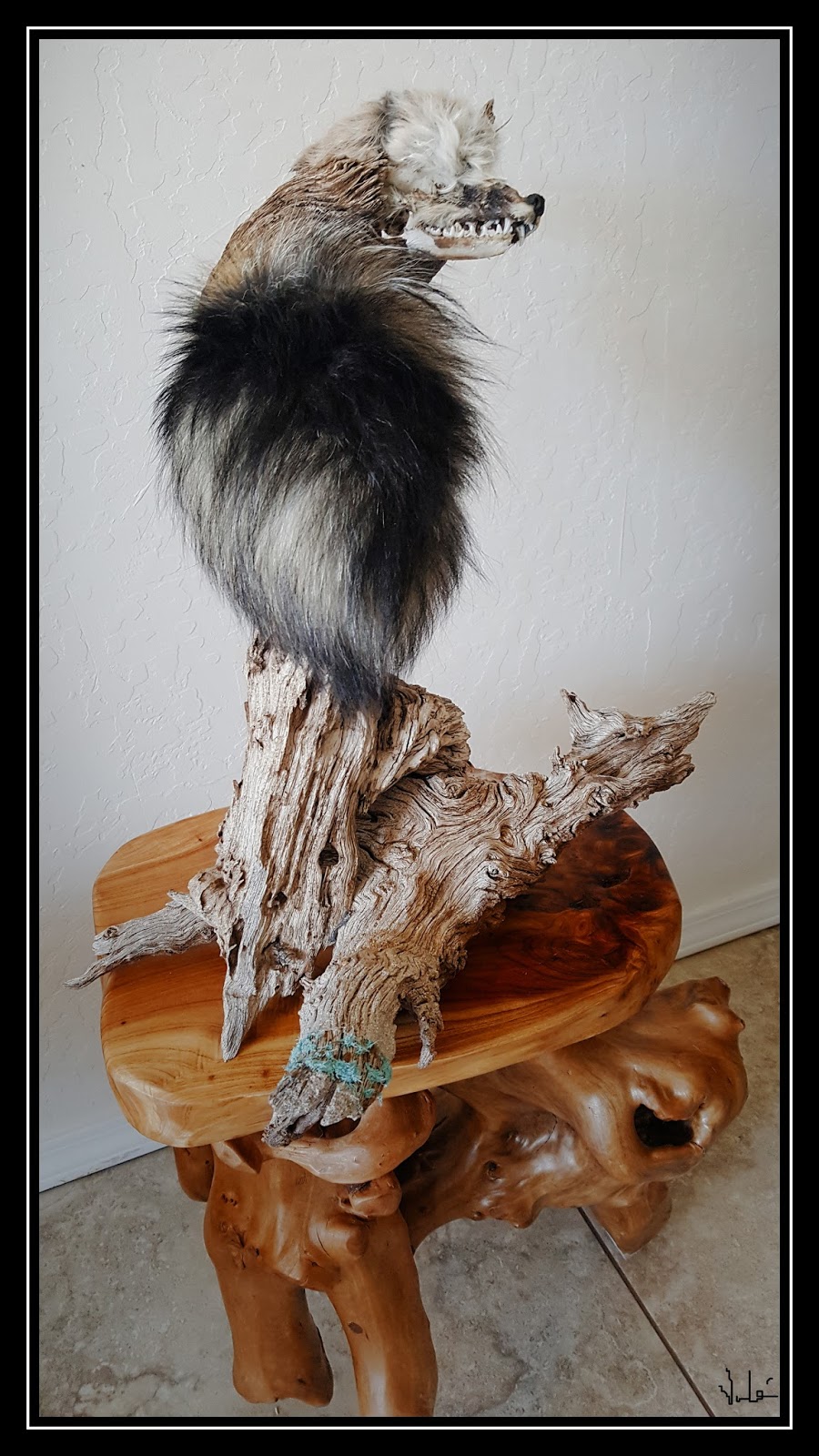Dicotylederm erratus --a Prehistoric Fish Yet Undiscovered
One of my university
professors sent me a note a few days ago where he was mentioning the artwork he
does with wood on “his island”. In fact he is the only person I know who own an
island and a fishing cabin on it.
And that triggered my imagination regarding a piece of wood I had picked up in the desert and had not yet decided what it should metamorphose into.
Here are the starting
materials for this project – the piece of wood, a deer’s leg, a multi-layered
stone and elk teeth. As with any project, I knew that I will add materials as I
go along once the goal of the project takes shape.
I do not use paint, spray or sheen enhancers on drift wood. I prefer ground, wet coffee. In fact that is what I use on antlers as well by first rubbing the coarse coffee grinds on the wood/antler as a minor abrasive and then soaking them in warm coffee for a short while. Here is the simple process in the kitchen sink:
As the wood was absorbing
the coffee tannin, I had to figure out how to secure the deer leg on the
stone. I opted for an intermediary – a deer vertebra that was sun bleached in
the desert. It provided a secure base for the leg and soon for the “fish”:
The wood had an opening
exactly where the eye should be, so looking at it as a side profile I could see
some prehistoric fish the fossil of which has never been discovered by
scientists. Especially a fish that had elk teeth!
I drilled sockets for
three teeth and filled the eye-opening with blue paint. A dab of white acrylic
paint completed the eye.
Then, all deep sea, prehistoric fish drawings I have seen had some sort of antennae or small horns. My fish should have these too. A couple of squirrel fingers did the trick.
The challenge was the back of the fish. Since this is a species unknown to science, then my fish can have a squirrel tail, hawk feathers on its side and porcupine quills atop! And since it was discovered in Arizona, it also has turquoise stones for elegance.
Here is the finished
product under the watchful eye of an old tiger I painted on hare skin:
Now I had to give it a
name. That was easy – what you are seeing is the first Dicotylederm erratus … I wanted to find a tautonym but did not come up with something clever.
May 28, 2021
© Vahé A. Kazandjian,
2021
PS/ As anticipated, I got a few emails basically asking "how did you come up with the name and what does it mean?"
Ok, somehow when I looked at the squirrel tail and the hawk feathers I recalled a plant anatomy class I took as an elective in my undergraduate studies. There under the dissecting microscope, we learned about dicotyledons and monocotyledons, basically plants where the seed either has two or one embryonic leaves or cotyledons.
Further, hardwood trees belong to the dicotyledon group. Putting these two together I came up with Dicotylederm indicating the "two-leafed shape and a hard skin".
As for erratus, I thought that such a structure and appearance was surely an error of nature!










Comments
Post a Comment